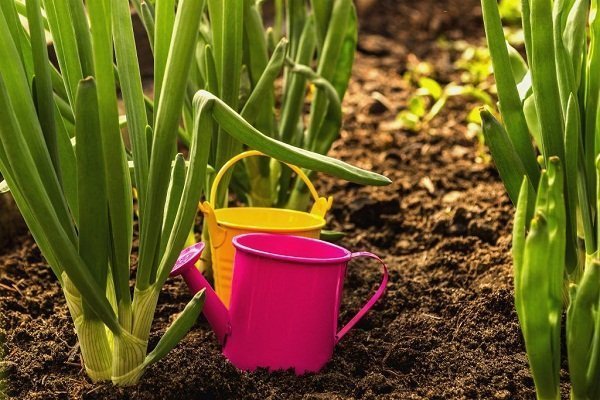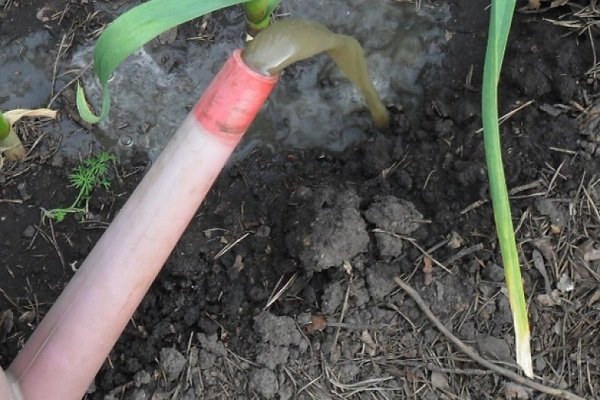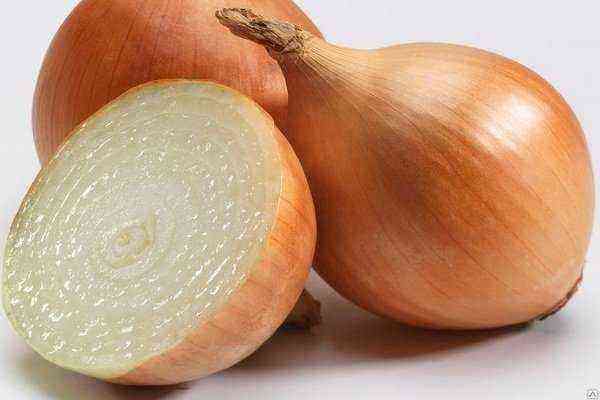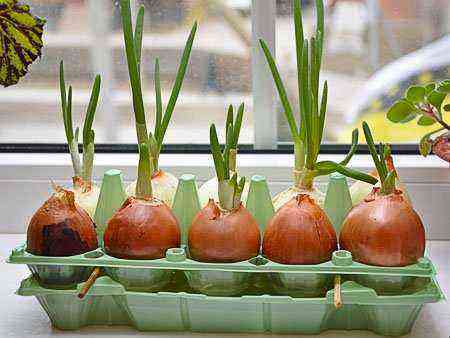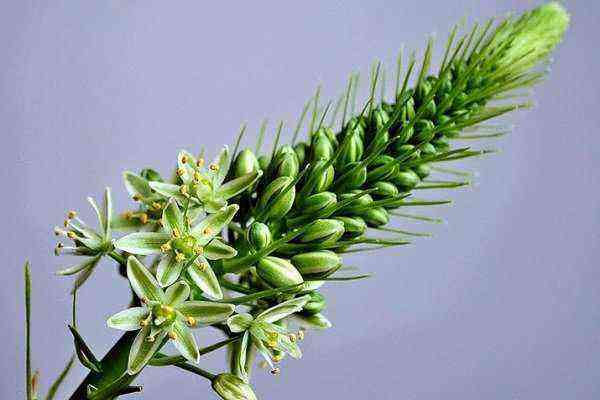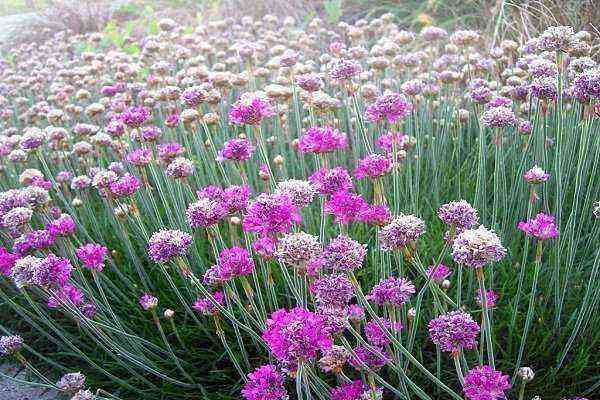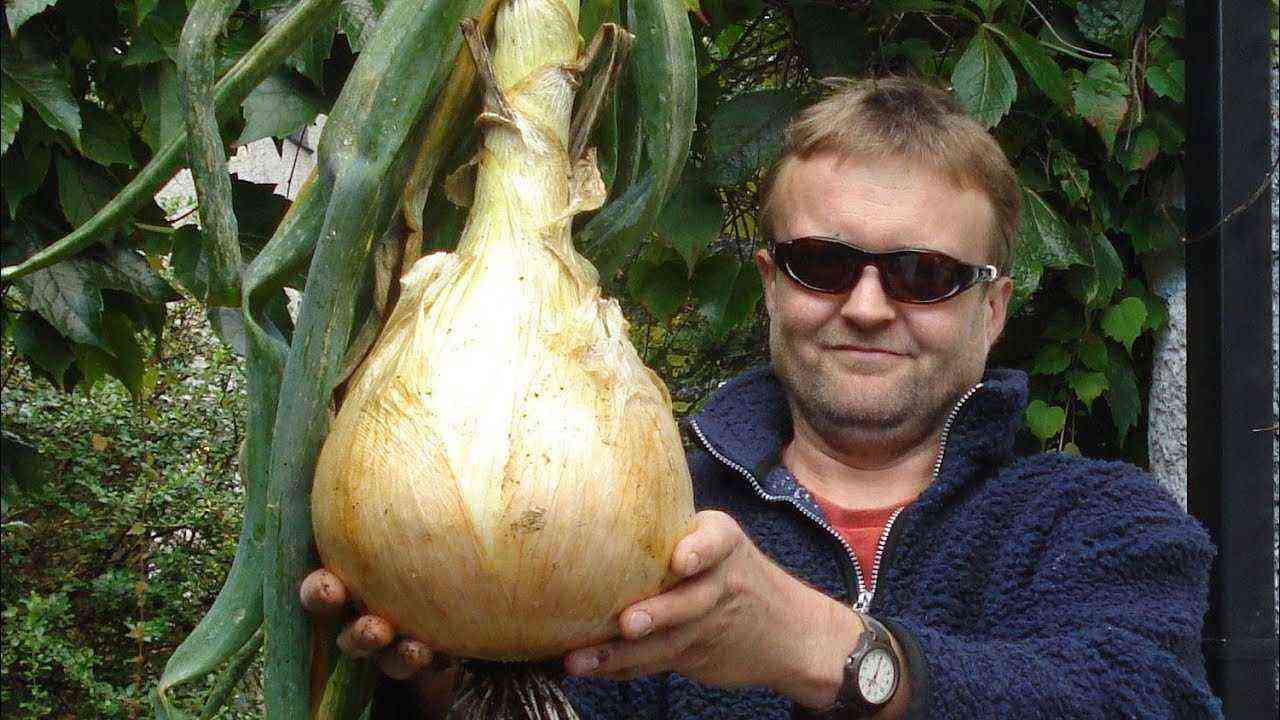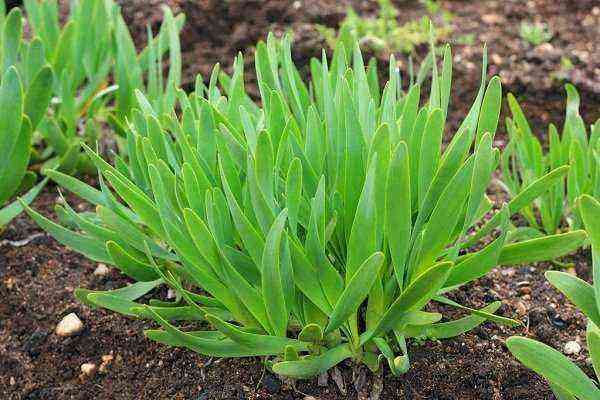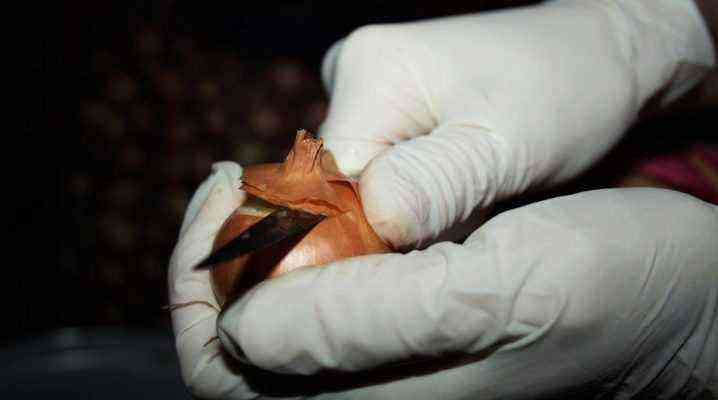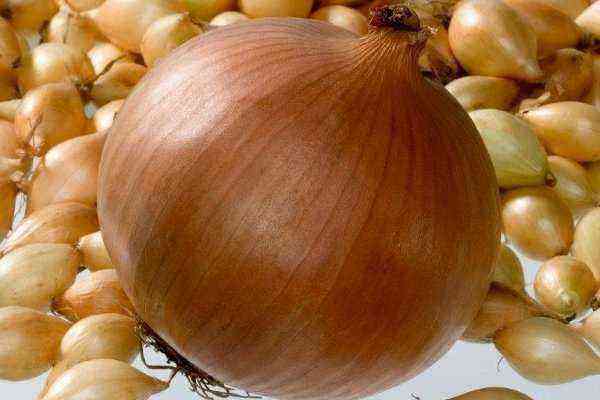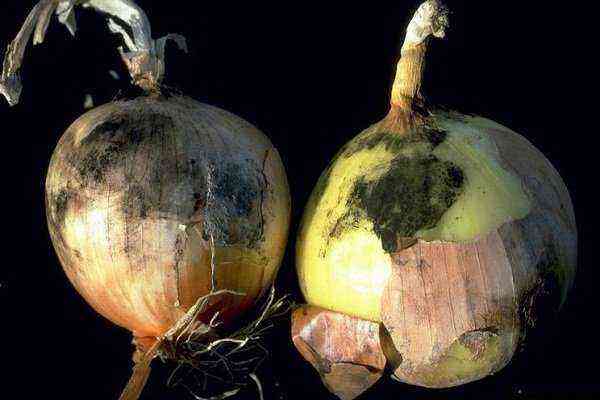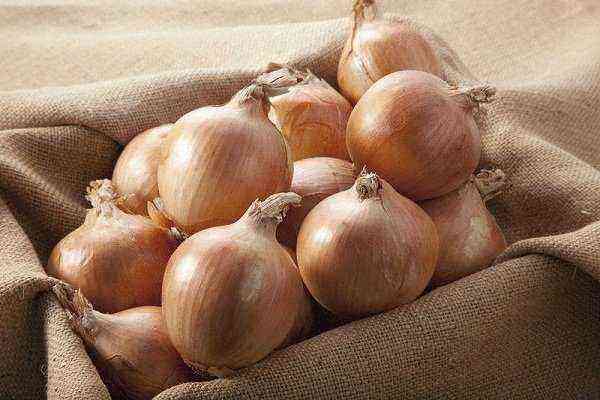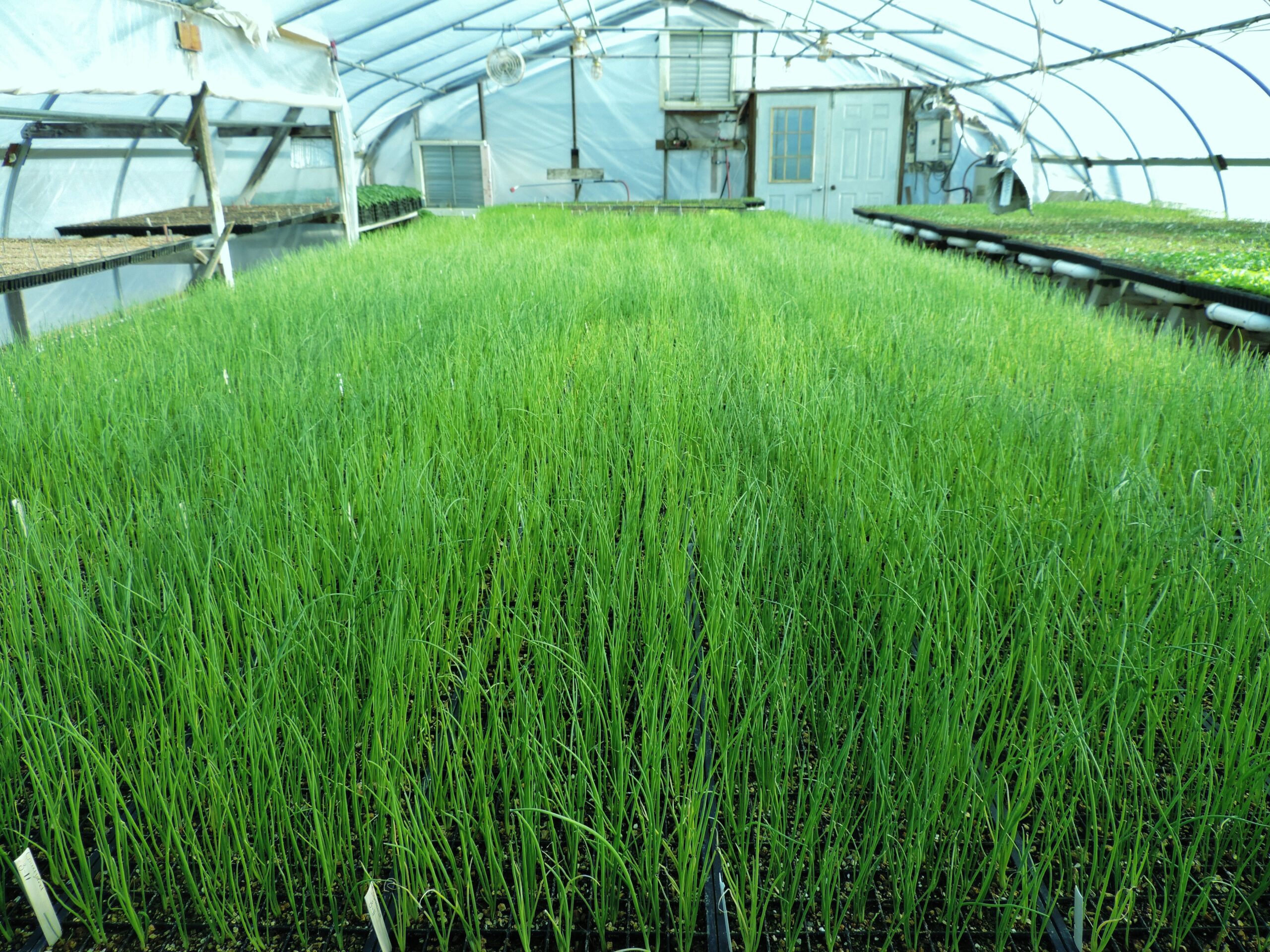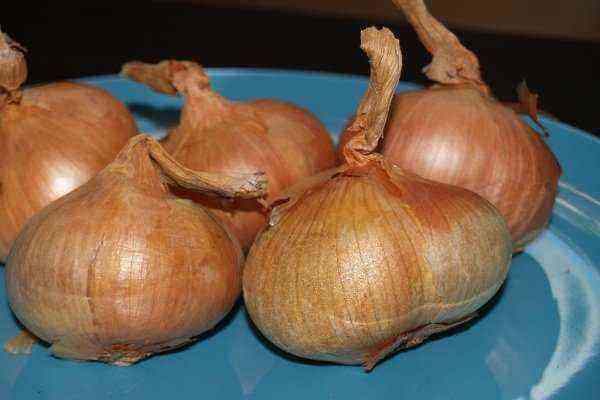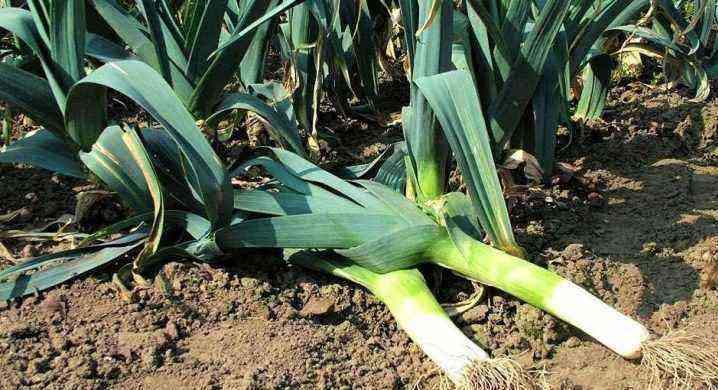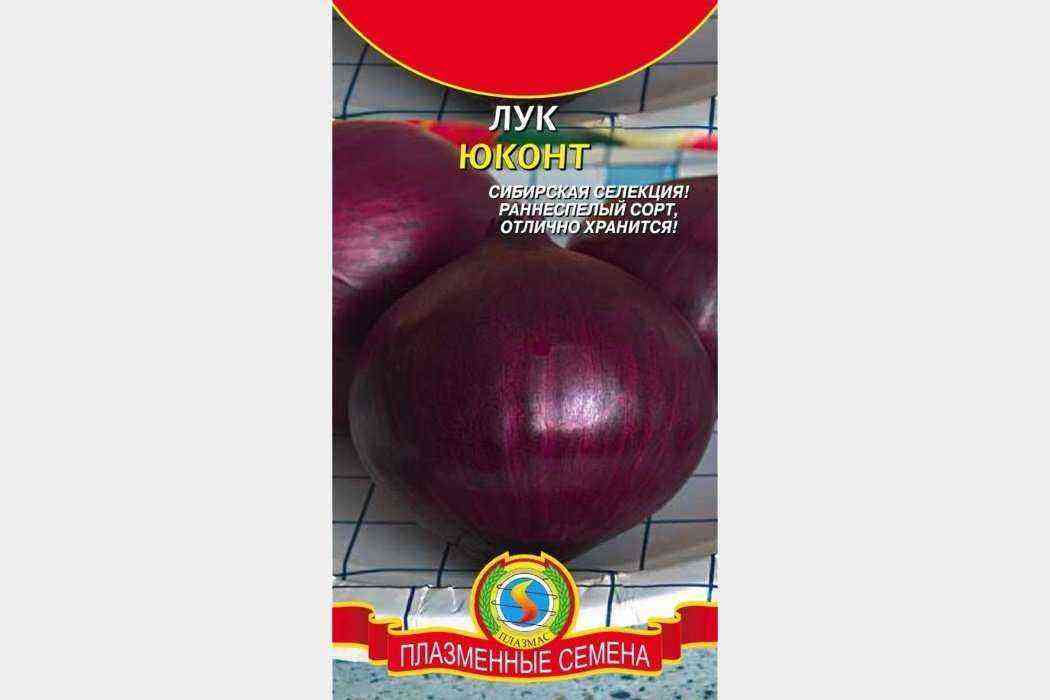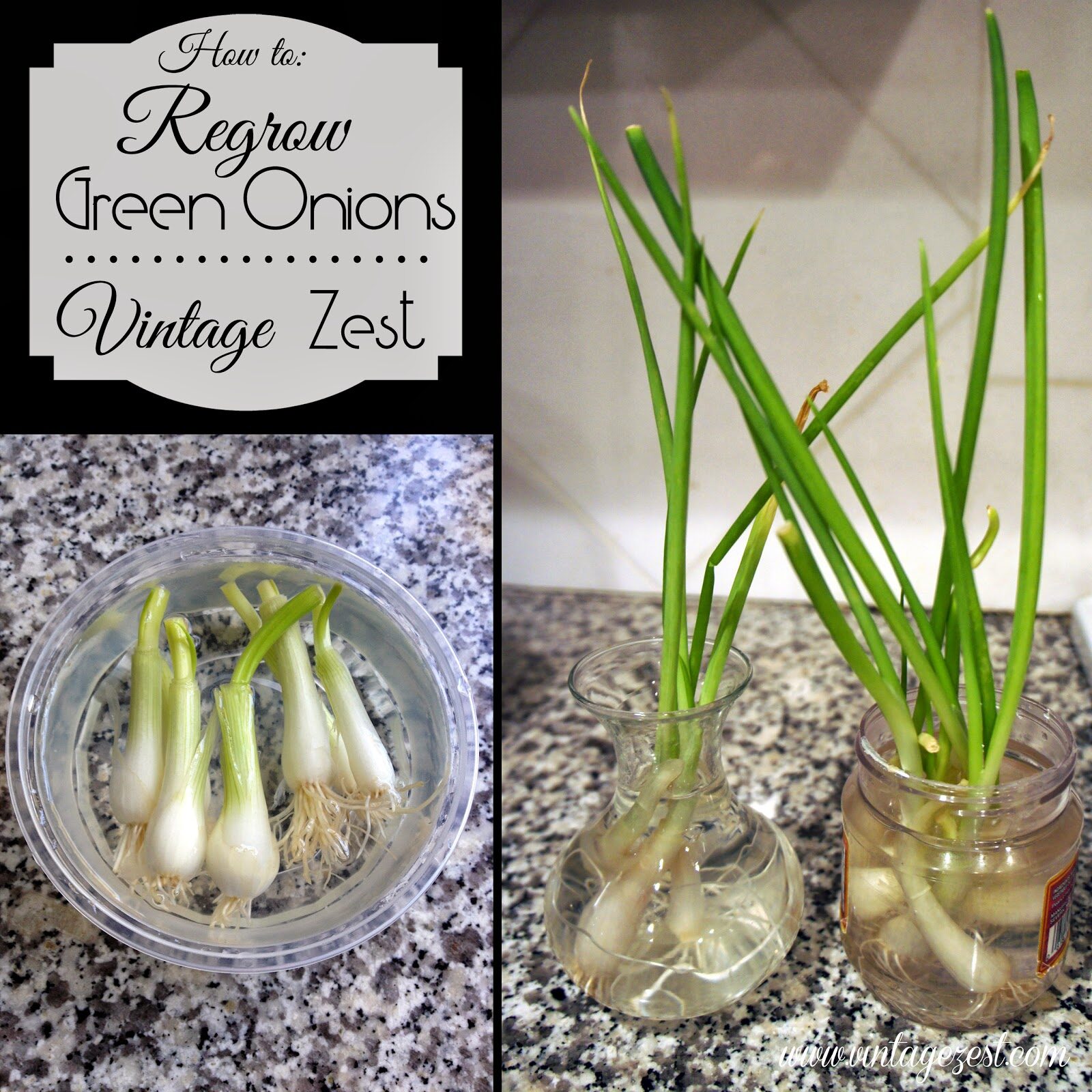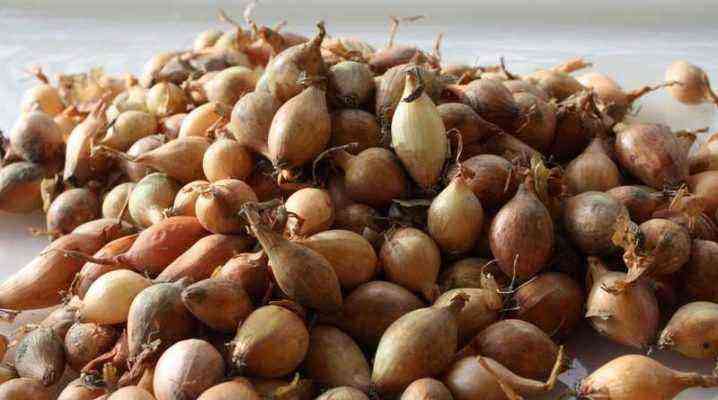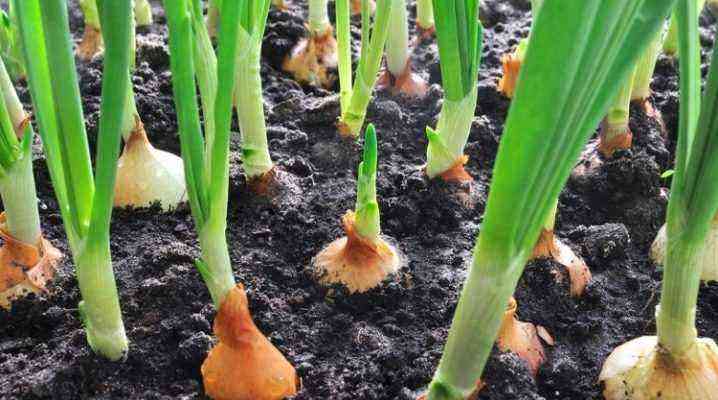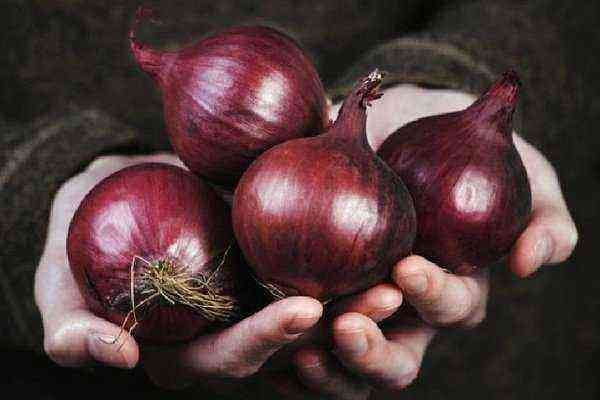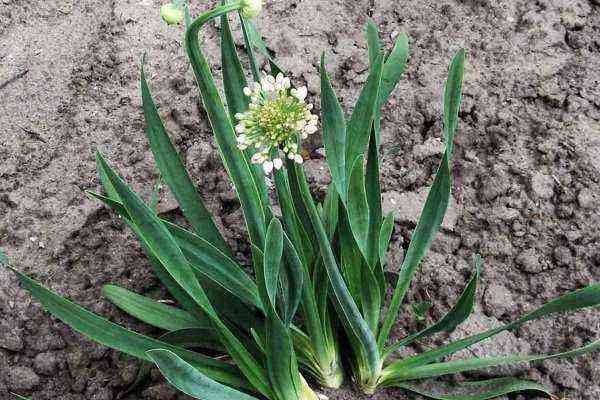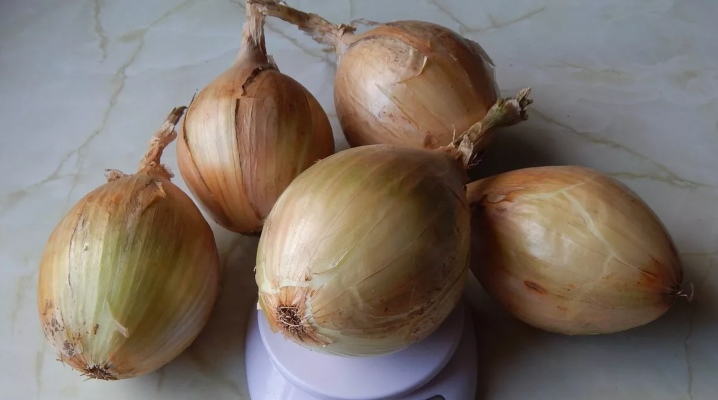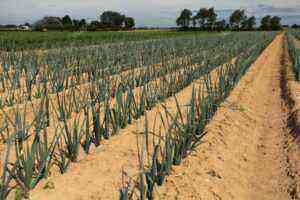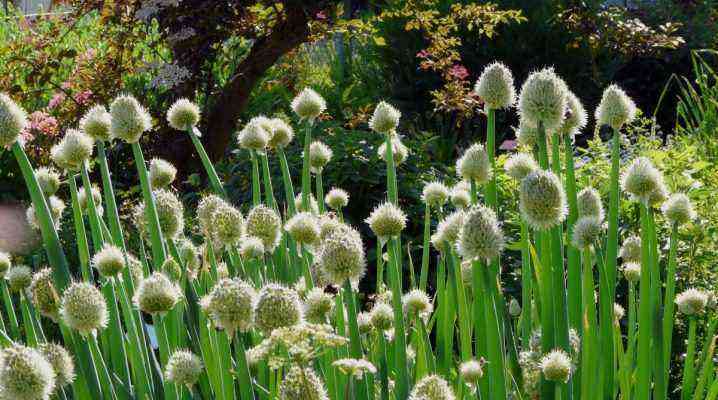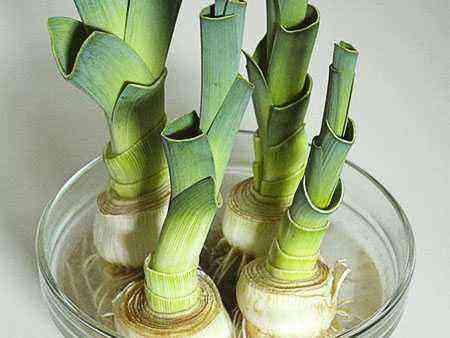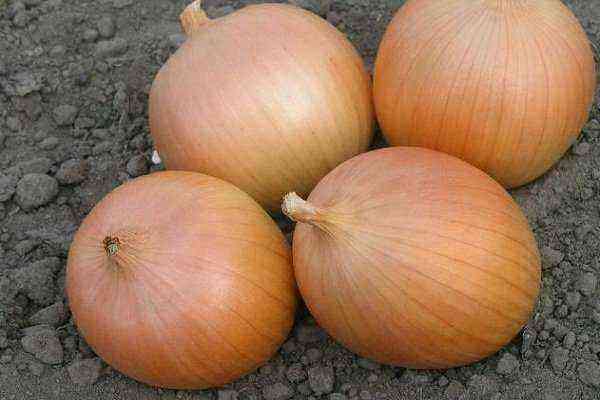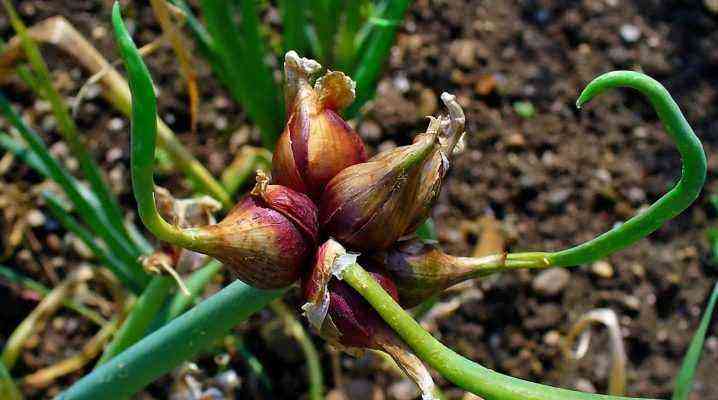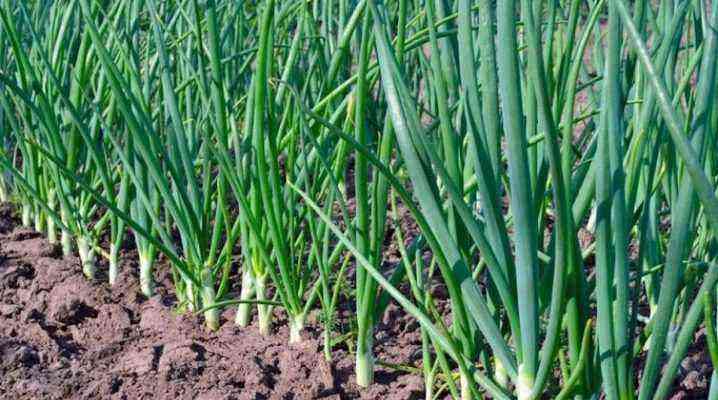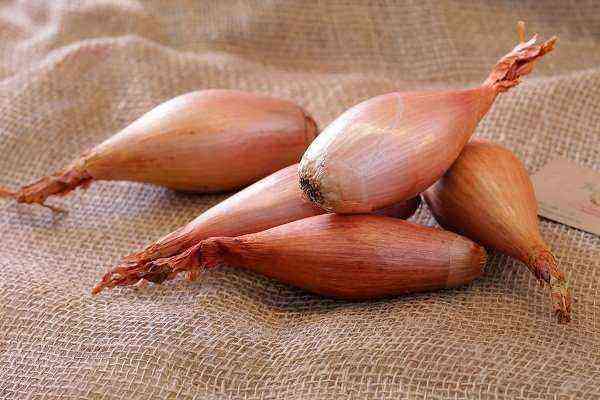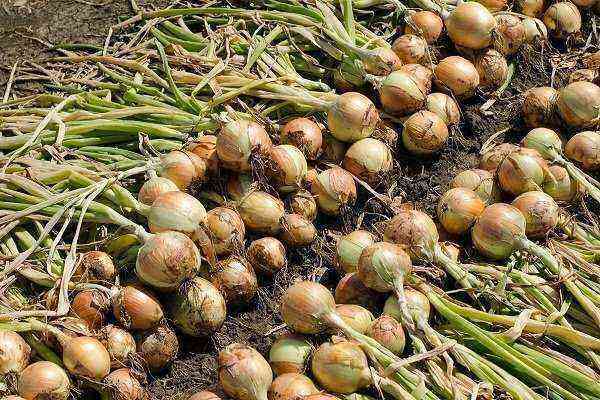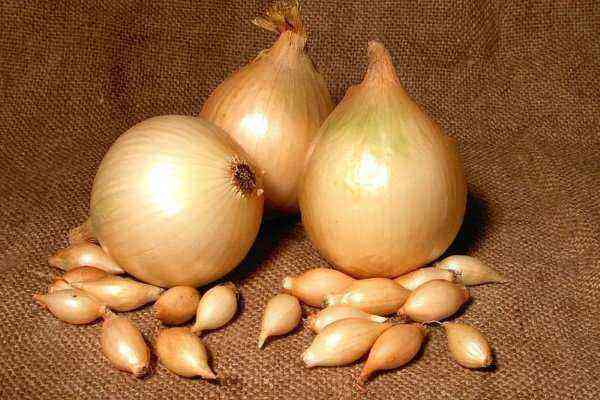Before feeding onions on a feather, carefully read the basic rules and timing of fertilizing. The quality and quantity of greens on a vegetable crop depends on this, since nutrients significantly affect the yield.
When are feedings carried out?
In order for the bulbous culture to give a lot of greenery, it is necessary to fertilize three times per season. Each fertilizer application has its own characteristics, which you need to rely on:
- Top dressing first activates feather growth. It is carried out after the formation of seedlings, that is, in the spring, 14-18 days after planting.
If the vegetable is grown for bulbs, then nitrogen-containing products purchased at the store (nitrate and the like) are introduced. They can be replaced with urea, fermented slurry or chicken manure.
When growing a culture only for a pen, urea and saltpeter are not used, but Nitroammophoska is required. Nutrients are introduced under the root system. - Second time top dressing is needed after 28-30 days, when the head is actively forming. Potassium and phosphorus (potassium salt or monophosphate, superphosphate) are introduced into the soil.
- Third time Nitroammophoska is required, which contributes to the pouring of the bulbs. About a month should pass from the previous feeding.
It is important to fertilize the soil in autumn and early spring – even before planting material is planted. For disinfection, copper sulfate is added (15 g per 10 liters of water), to normalize acidity – a mixture of lime, dolomite flour, wood ash and chalk.
Features of dressing onions on a feather
The type of fertilizer applied is affected by the composition of the soil, the variety of onions, so you need to pay attention to signs of a lack of certain substances:
| Name of useful substance | Symptoms of deficiency |
| Nitrogen. | The formation of yellow spots, fading of the color of the feathers, slow growth. |
| Potassium. | Necrosis of green tips. |
| Phosphorus. | The presence of brown spots, slow growth. |
| Zinc. | Twisting and falling of the pen. |
| Copper. | Thinness of greenery, pallor of color. |
To make fertilizers beneficial, follow these simple recommendations:
- If onions are grown in greenhouse conditions, they will have to be fed with dry mineral fertilizers, which are scattered on the ground near the root and moistened.
- During heavy rains, nutrients are introduced not under the root, but at a distance of 10-12 cm from the vegetables.
- When preparing solutions, only warm settled water is used. Some fertilizers require the use of a hot liquid for preparation, but you need to water the garden bed with a cooled solution.
- If several components are mixed, the mixture is infused for 50-60 minutes for a complete connection of useful components.
- Fertilization time – morning or evening, that is, when there is no influence of direct sunlight.
- Make sure that the mixture does not fall on the green part of the plant, as many fertilizers burn tender leaves. If this happens, immediately wash off the solution with clean water.
- After fertilization, there are residues of ingredients on the soil that need to be washed out with water the next day.
- If you plant onions on sandy soil, increase the frequency of dressings, but at the same time their concentration should be less.
- Clay soil requires highly concentrated solutions.
- Minerals are applied only to moist soil.
- When sowing onions in autumn, the soil is fertilized with ashes and rotted manure.
- Minerals and organics should alternate with each other.
- It is forbidden to apply fertilizers in high concentrations and too often, as an excess of nutrients harms the vegetation. Do not water mullein or bird droppings undiluted – this will burn the tops of the onions.
Organic
Organics are natural fertilizers that are completely safe for humans, animals and vegetation. But it has a significant drawback – the impossibility of accurately determining the presence of a particular element.
What can be used:
- Humus has a long and lasting effect. The composition is applied at the rate of 1 sq. m 5 kg of rotted composition. Bookmarking is best done in the fall.
- Wood ash contains all the necessary components – sodium, calcium, magnesium and potassium. For top dressing, it is enough to dispel the ashes over the plants, but you can also add ash to the water for irrigation.
- For saturation with nitrogen, a mixture of mullein (diluted in a ratio of 1:3 with water) and chicken manure (1:15) is used. Next, add 10 ml of each mixture to 250 liters of water.
- Dilute horse manure in water in the proportion: 0,5 kg of manure per bucket of water. Infuse the mixture for 7-8 days, then dilute again (for 5 liters of water – 1 liter of slurry).
- Cow dung. Pure component in the amount of 500 g diluted with water (5 l). Let it brew for a week, then combine the liquid with clean warm water in a ratio of 1:5.
Organic fertilizers are not recommended to be poured under the root, it is better to apply them between rows.
Minerals
The main trace elements for feather growth:
- potassium normalizes the water balance in greenery, increases the concentration of sugar (the feathers will not be too bitter and sharp), strengthens the plant’s immunity, developing resistance to diseases. The substances used are potassium salt and saltpeter, potassium magnesia, potassium chloride.
- Phosphorus speeds up metabolic processes. Contained in superphosphate, nitroammofosk, tomasshlak, phosphorite flour.
- Nitrogen activates green growth. Means – urea, ammonium nitrate, ammophoska, ammonium carbonate.
As a mineral fertilizer, potassium salt, saltpeter, superphosphate are used. These elements can be bought in powder form and mixed together in the following ratio: 2 tbsp. l. superphosphate, 1 tbsp. l. salt and nitrate. All this is diluted in 10 liters of water. This is a universal recipe, but there are many other mixed remedies that are equally effective:
- For 5 liters of settled water, 2 tbsp. l of Vegeta, the same amount of Effecton-O and 1 tsp. Agricola.
- For half a bucket of water, take 1 tbsp. l. ammonium nitrate and potassium salt, 2 tbsp. l. superphosphate, 1,5 tbsp. l. ammonia.
- Mix Effecton-O (2 tablespoons) with Superphosphate (1 tablespoon), sprinkle between the rows.
- Dry mix: sodium chloride – 20 g, ammonium nitrate – 25 g, potassium chlorine – 30 g.
- Ammonia – 3 tbsp. l., ammonium nitrate – 1 tbsp. l., superphosphate – 2 tbsp. l., a solution of potassium permanganate – 1 tbsp. l. water 2 crystals.
- Baikal EM-1. Diluted with water at a ratio of 1:1000. Promotes reduction of forcing time, increase of productivity.
Mixed fertilizers
Separately, you can purchase preparations that contribute to the forcing of onions on a feather, containing simultaneously different trace elements:
- Nitrophoska granulated contains nitrogen, potassium and phosphorus compounds. It is applied in the spring to accelerate the growth of the feather part. Proportions: a bucket of water per 40 g of the drug.
- Effecton-O liquid has the same composition as the previous one. To dilute 200 ml of liquid, 10 liters of water are required.
- Vegeta contains humates, trace elements. To accelerate the growth of green mass, the product is diluted in water (2 tbsp per bucket).
- Oxygumate – a growth stimulator based on amines, acids, humates, etc. Dilute strictly in accordance with the instructions.
Traditional recipes
Traditional medicine involves the use of improvised materials of natural origin. They have been popular for a long time. What is needed for a bow on a feather:
- Nettle infusion. Fill the bucket halfway with grass, pour warm water, let it brew until complete fermentation. Then strain and dilute with water in a ratio of 1:5, pour between the rows.
- Prepare any weeds, dandelions, nettles. Finely chop with a knife, put in any container, filling it with grass by 1/3. Fill the rest of the volume with warm water and leave to ferment for 3 days. After this time, add wood ash (for 5 liters of solution – 1,5 kg). Before watering, dilute the mixture again with water (1:10).
- An infusion can be made from a mixture of such herbs: clover, chamomile, mustard, nettle. The method of preparation and use is identical to the previous one.
- Yeast top dressing consists of microscopic fungi saturated with minerals. Yeast helps to stimulate the growth of greenery and the underground part, due to which not only the feather, but also the bulb grows.
Dry or live yeast is used – 10 g or 500 g, – granulated sugar – 5-6 tbsp. l., warm water (not hot) – 10 l. To improve the effect, additional wood ash is added in the amount of 2 glasses. After mixing the components, let it brew for fermentation for 3 days. Before watering, dilute with water in a ratio of 1:10. - Ammonia helps to fill the lack of nitrogen. It prevents yellowing of the green mass. A bucket of water will need 3 tbsp. l. drug. If the feathers are already yellow, you need to water the plants every day (morning or evening). Ammonia additionally repels the onion fly and other insect pests.
- Complex top dressing: heat water (10 l) to a warm temperature, introduce 0,5 kg of soft bread, 500 g of live yeast and the same amount of chopped grass (nettle, weeds, etc.). Let it brew for a couple of days. Before watering, dilute with water (1:10).
Use wood ash more often, as it contains many nutritional compounds, especially potassium. Dilute the ashes with water or pour them into the root part in a dry form, but make sure that there is no excess of trace elements.
Useful tips gardeners
Be sure to comply with agricultural requirements. Otherwise, you will not be able to get a lot of greenery.
Other helpful tips:
- Fertilize generously with nitrogen and phosphate during planting, feathering and thinning.
- In the future, nitrogen is required in minimal quantities, so do not overdo it with its introduction.
- Feed the bulbs after watering or rain – so the nutrients are better absorbed by the soil.
- In autumn, yellowing of feathers is considered the norm, so at this time do not apply fertilizer in the form of preparations, but use folk remedies.
- Do not apply yeast products to unheated soil, because there will be no fermentation process, respectively, and the desired effect. The best period for yeast is summer, late spring, early autumn.
- Fresh manure is contraindicated, as bulbs will not form, and the vegetable will be subject to fungal diseases.
- For the growth of feathers, it is most important to apply organic fertilizers, which negatively affects the growth of the head.
- To avoid diseases, soak the onions for 15-20 minutes in a weak solution of potassium permanganate before planting.
- Many summer residents do the first top dressing when soaking planting material. Ammonium nitrate is added to the water (1 tsp of the product per bucket of water). Keep 15 minutes.
- You can disinfect bulbs for planting with Ellin Extra.
- Do not overwater the soil, as the feathers will be too watery and tasteless, and the head will rot. Abundantly watered only until July. At the same time, the frequency and amount of watering should be reduced gradually.
When growing onions on a feather, fertilize correctly, taking into account the requirements and recommendations. If you purchase mixed complex preparations, carefully study the instructions – the same product cannot be used in the same dosage for different types of soil.
